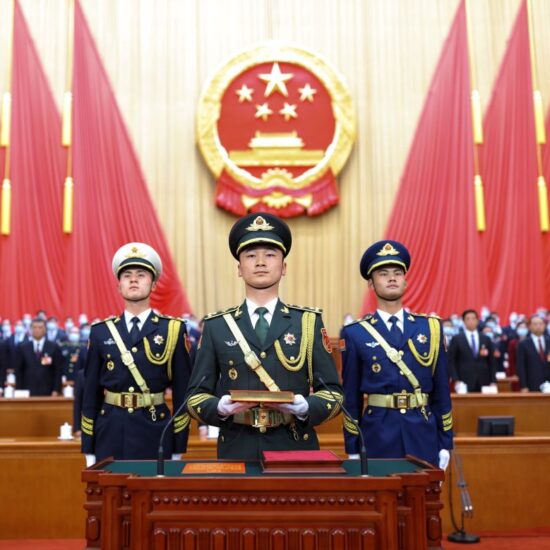
An alliance of rebel forces in war-torn Myanmar has taken several key towns from the country’s military regime in recent weeks, the most successful challenge to the junta that seized power in a coup in 2021 and the latest evidence of how overstretched the military has become.
The early successes of the alliance’s campaign, which began in Shan State at the end of last month, have encouraged resistance forces elsewhere in the country, which have also seized several towns.
On Wednesday, Senior Gen. Min Aung Hlaing, the commander in chief of the armed forces, called a meeting of the defense and security council and said that the military had lost control of three towns in Shan State — the first official acknowledgment of the losses — and said the army was “committed to taking the required actions to counter their acts of terror.” But so far, it did not seem to have taken much action.
“We’re on Day 14, and there’s been no real response from the military other than a bunch of meetings and saber rattling,” said Jason Tower, the country director for Myanmar for the United States Institute of Peace, a nonpartisan research organization. “I think that says a lot.”
Myint Swe, the acting president installed by the military after the coup, warned at the same meeting Wednesday that the country ran the risk of being broken apart.
The offensive began on Oct. 27 after three ethnic armies — the Myanmar National Democratic Alliance Army, the Ta’ang National Liberation Army and the Arakan Army — announced “Operation 1027.” The rebels, which call themselves the Brotherhood Alliance, opened fire on the military, capturing trucks and weapons, according to videos on social media.
The alliance and the National Unity Government, the shadow civilian government, said that as of Friday they had seized seven towns in Shan State, including several crucial trade routes to China, and three others in the central Sagaing region. Together, these towns cover more than 8,000 square kilometers, larger than the state of Delaware.
The junta is now on the verge of losing control of its most important border crossings, representing more than 40 percent of cross-border trade vital for tax revenue, according to the United States Institute of Peace.
On Friday, Zaw Min Tun, the military spokesman, called on the public to “not to believe rumors and propaganda.” “I would like to say that it will soon be settled and a safe situation will be restored,” he said in a statement.
The military has been plagued by defections and struggled to recruit from a populace still angry about military rule.
For two years, the various armed ethnic groups, which have battled the army for decades, and the People’s Defense Forces — former protesters who took up arms — have combined forces, and they now control large parts of the countryside. But these groups have operated autonomously and are fragmented throughout Myanmar.
Now, the resistance movement has been galvanized by the successes of the Brotherhood Alliance.
On Monday, the People’s Defense Forces said it had taken control of Kawlin, a town in the region of Upper Sagaing, raising its flag outside a government building. On Tuesday, Karenni resistance forces said they seized three military outposts in Mese, a town in the east. On the same day, the People’s Defense Forces said it had taken control of Khampat, a town in the west.
U Kyaw Naing, the spokesman for the Myanmar National Democratic Alliance Army, said the alliance had captured more than 150 military outposts.
And Lieutenant Colonel Tar Aik Kyaw, the spokesman for the Ta’ang National Liberation Army, said more than 300 soldiers had surrendered in Shan State, some laying down their arms without engaging in combat.
But Richard Horsey, a senior adviser on Myanmar for the International Crisis Group, cautioned that it may be too early to call this a turning point.
“There isn’t a straight line from trouble on the battlefield in somewhere like Northern Shan to failure of the regime,” he said. “They’ve been doing this for 70 years, fighting very difficult battles across quite significant chunks of Myanmar, and, yet, it hasn’t led to military collapse.”
The threat of conflict spreading has also raised fears of a humanitarian crisis. Local aid workers say that more than 30,000 people are displaced, with many fleeing on foot to Lashio, the largest town in Shan State, among other places.
Shan State is Myanmar’s largest state, covering almost a quarter of the country. For decades, various ethnic groups have battled one another for more territorial control within the state. Once known for being the center of opium production in the country, it is now home to dozens of casinos and scam compounds.
Thousands of Chinese citizens have been trafficked into these centers, and China in recent months has focused on trying to get them shut down and bringing its people home. Laukkai, in particular, has been a hub of such scam centers. Some refugees from that city have fled to China, and last week, Thailand’s deputy police chief said that the country plans to repatriate 162 Thai citizens who had been held there.
On Tuesday, a spokesman for China’s foreign ministry said the Chinese government had lodged a protest with the “relevant parties” in Myanmar because the fighting had resulted in the deaths of Chinese citizens.
A day earlier, China’s assistant foreign minister, Nong Rong, urged officials in Myanmar to maintain stability on the China-Myanmar border. China, which has expressed support for the military regime after the coup, is building a billion-dollar rail line in Shan State under its Belt and Road infrastructure program.
Several analysts say they believe that the offensive would not have gone ahead without implicit approval from China, which wields a lot of influence on many of these ethnic groups, and did nothing to stop the operation despite signs leading up to it.
Amy Chang Chien contributed reporting from Taipei.













